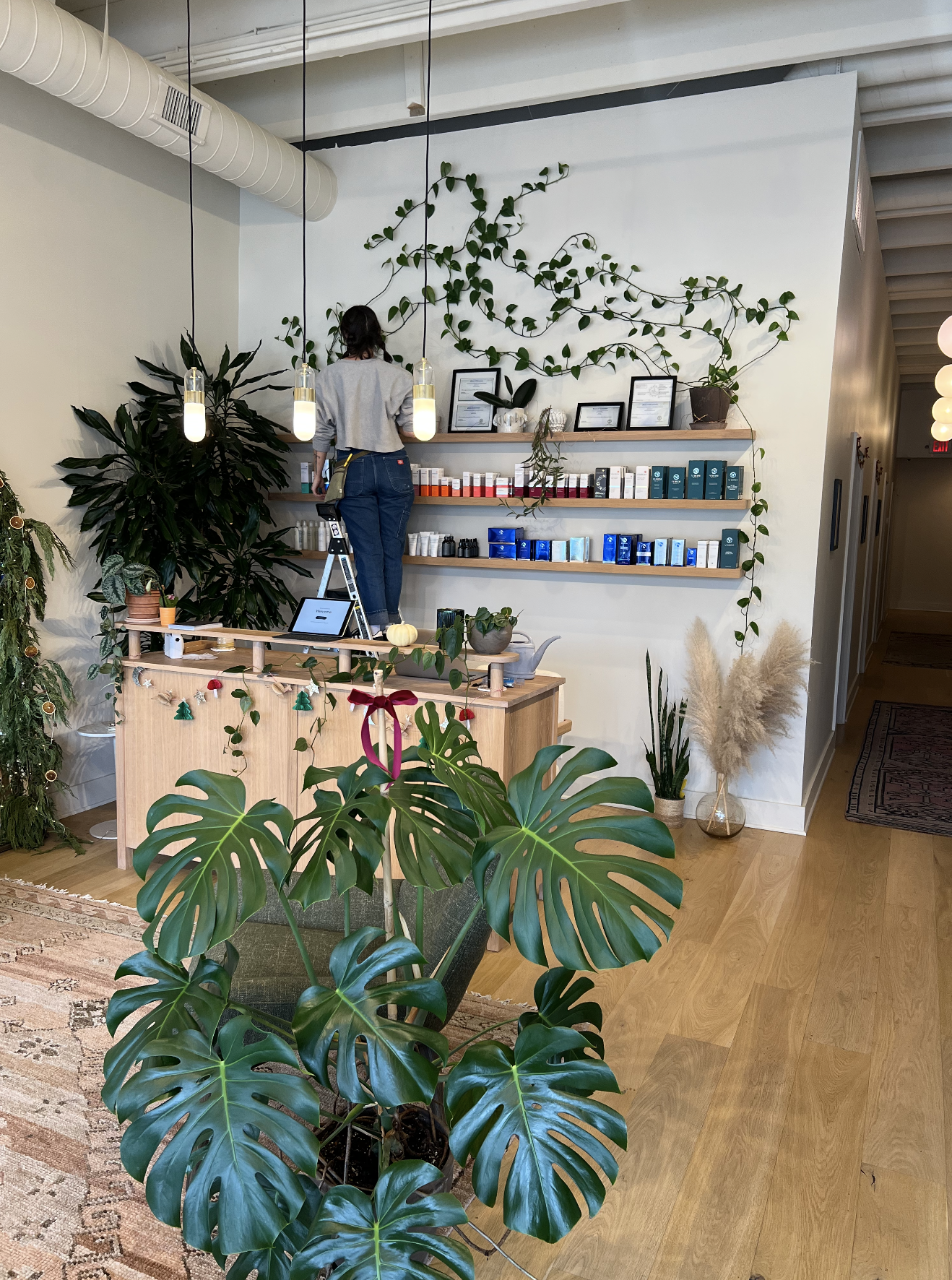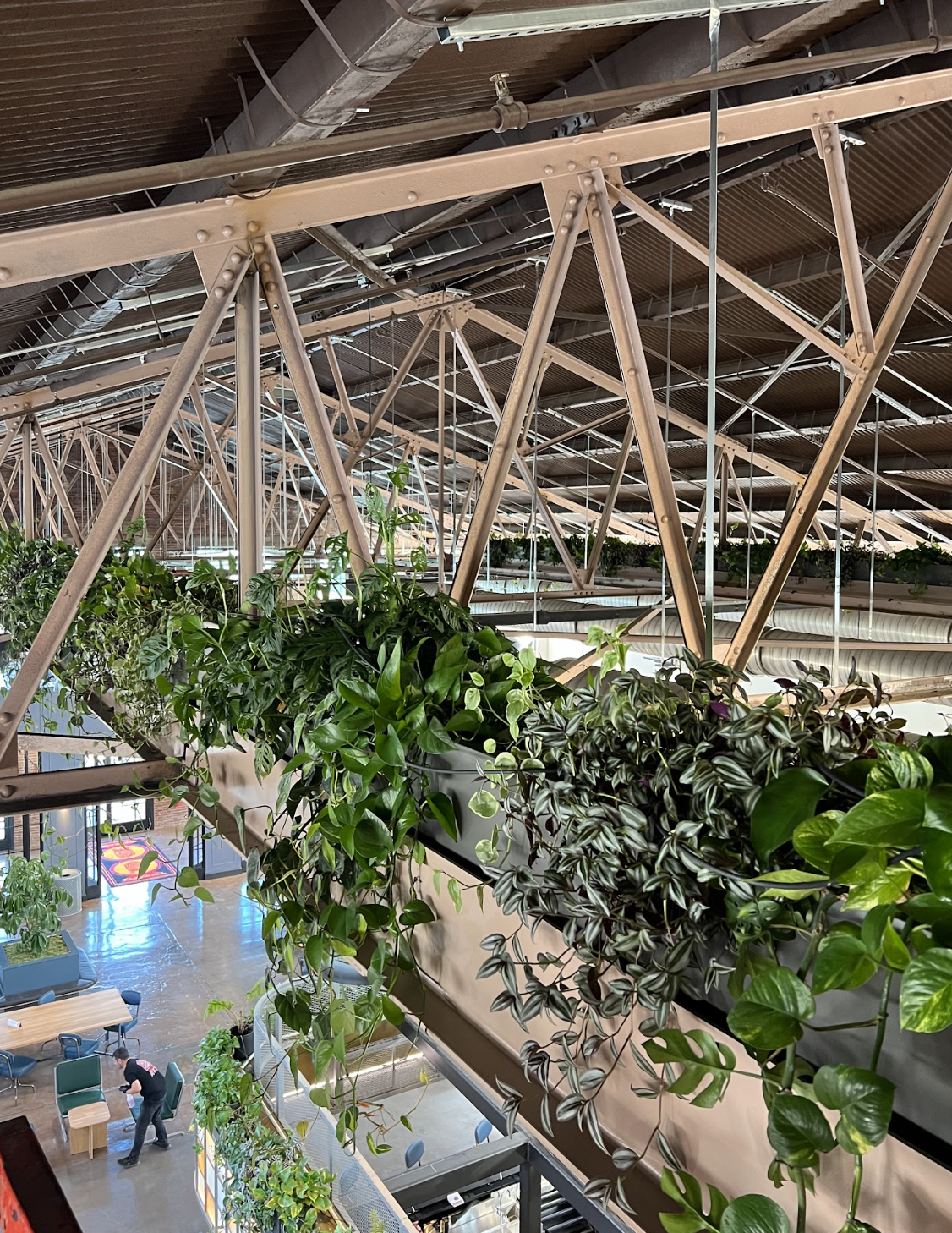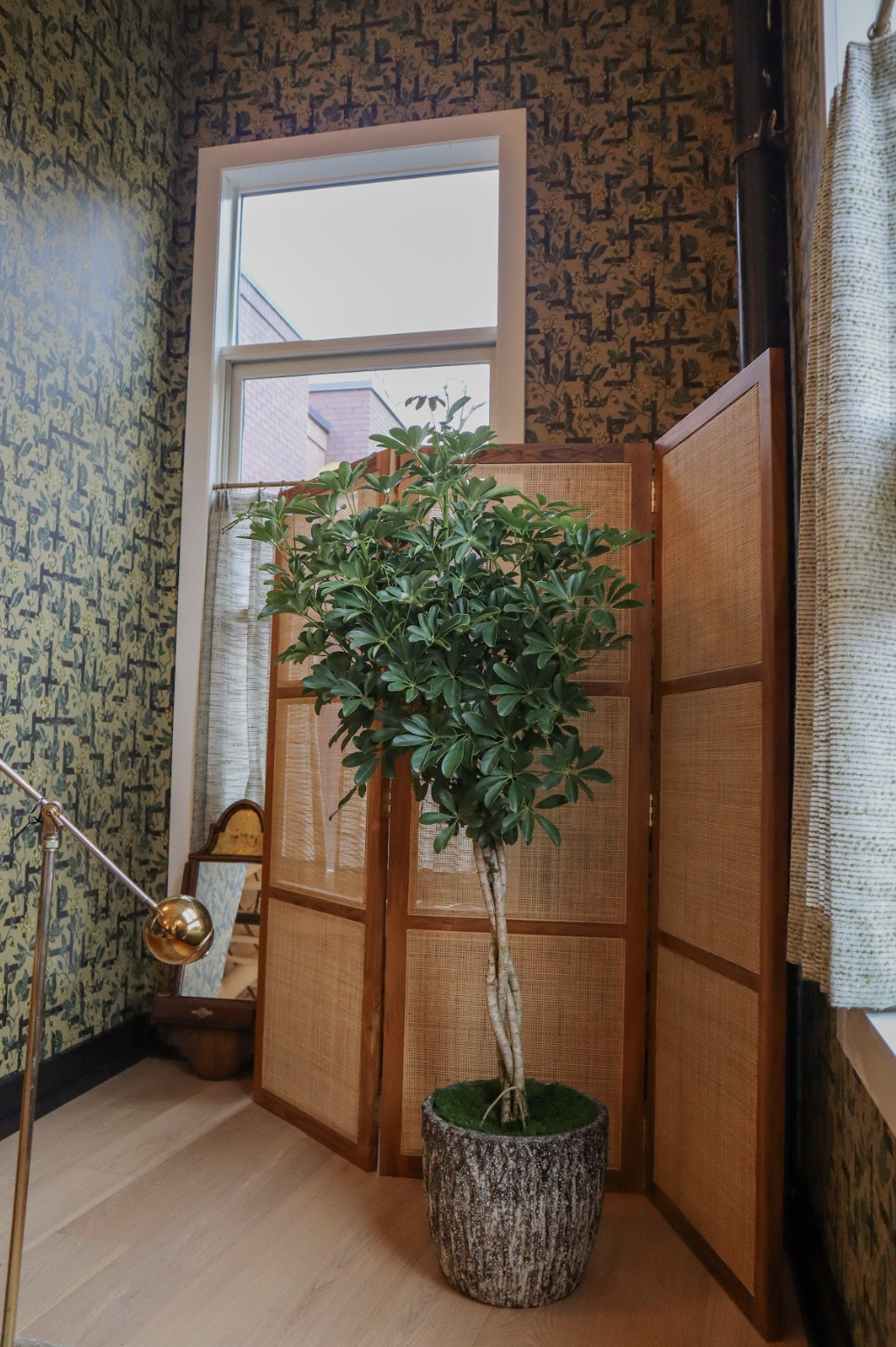It’s Not Just Plants: Interiorscaping is Game Changing
What is interiorscaping?
Interiorscaping is the practice of bringing plants into interior spaces with design elements, function, and biophilia in mind. Professional interiorscapers have an eye for composition that incorporates nature seamlessly into indoor environments and a knowledge of care requirements and growth habits needed to ensure the plants will thrive.
In commercial spaces, that can mean working with business owners, architects, and interior designers to curate plant design that compliments an existing aesthetic or is woven into the design concept from the beginning. The theory of biophilia suggests that humans are biologically drawn to nature and numerous studies show that interior plants improve mood and decrease stress. By bringing plants into commercial spaces, you create an environment that clientele want to come back to. What’s more, customers will begin to associate that positive mood with the business. Interior plants benefit those who work in commercial spaces as well. We see those same mood boosting effects and an increase in productivity and creativity.
In residential environments, houseplant stylists can work with individuals to cultivate a deeply personal interiorscape that’s designed to fit the function and form of the home. This can prove to be a challenge at times though, as residential spaces often don’t have the most optimal conditions for plants. The knowledge professional interiorscapes have about specific plant care needs helps them choose plants that will thrive in any residential space.
What is biophilic design?
One technique of note, biophilic design, has gained immense popularity in the zeitgeist and is pushing the interiorscaping industry towards new growth and multidisciplinary collaboration. The practice puts an emphasis on human connection to nature by melding natural landscapes, native biodiversity, and community history with interiors. Biophilic design aims to add multisensory natural elements to built environments that flow throughout the entire space.
When a built environment is biophilic, the space will encourage connection, community, and reflect the history that’s passed through the space. Biophilic design is intentional, impactful, and can tell a story.
An example of biophilic design in our work is the concept we created for a small business in Nashville, Hannah Ellis Skincare. The clients’ goal was to create a relaxing, welcoming waiting room space. Adding a propagation wall created a beautiful conversation piece that literally grows with the company and trailing vines along another wall work to let the entire space flow together. Her clients begin their visits in a serene environment, nestled by greenery and take those positive feelings with them into their service.
Why Plant Savvy?
Plant Savvy is a full service interiorscaping company with a track record of producing high quality design concepts, intentional maintenance plans for interior plants, and offering expertise in consulting.
If you’re looking to elevate design in your commercial space, reach out to us!
Happy Planting,
Kelly








